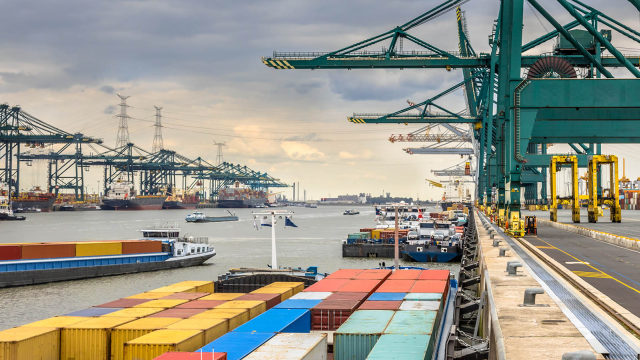Combined Transport
The case for more inland waterway transport
Moving towards climate neutrality, going through a digital transformation and increasing resilience results in the transition of major industrial sectors. The European Green Deal is guiding the agricultural, energy, chemical, steel and construction sector through a sustainable and circular transformation. The big volumes involved are well suited for inland shipping.
Construction materials constitute the largest cargo flow in cities, building and demolition represent one third of EU waste generation. To enable seamless and sustainable transport for new economies, multimodality has to become the default option.
Further integration of waterways with other modes should not only be pursued for international and inter-regional flows, but also in urban environments where most of the negative externalities are generated. Next to sustainable mobility of persons in cities, we need sustainable movement of freight and proactive urban planning. Inland ports are multimodal hubs and enablers of green logistics.
The Inland Navigation Market Observatory has made an assessment of new market opportunities for inland shipping and sheds light on new types of logistics, vessels and new areas of operation which will be required to capture those markets. Promising markets are: urban passenger and freight transport, new cargo flows generated by the circular economy and transport of renewable energies and components for their generation.

Revision of the combined transport directive
To support the shift from road freight to lower emission transport modes such as inland waterways, maritime transport and rail, the Commission outlined a revision of the Combined Transport Directive. In order to implement the ‘polluter pays’ and ‘user pays’ principles, the Commission proposes that Member States set up national policy frameworks for intermodal operations that save 40% of external costs compared to road-only alternative. Users of intermodal operations must make use of eFTI platforms to be eligible for support. Member States can choose measures suitable for their situation but the aim is to achieve 10% cost reduction for combined transport in 7.5 years.
Priorities for INE
The Commission published its proposal to revise the combined transport directive end of 2023. The Commission abandoned the rather arbitrary distance parameter which is almost impossible to apply to inland waterway transport and proposed instead intermodal transport that saves 40% externalities which is a better approach as long as the calculation of external costs takes due account of the peculiarities of inland waterway transport.
Given the geographical and organisational diversity between Member States, the Commission proposes an open list of different support measures from which Member states can choose to compose a toolbox that is customised to specific needs in order to boost combined transport. INE would welcome that the proposed support measures are covered by the general block exemption regulation (GBER), the revised railway state aid guidelines and the transport block exemption which are expected to be published in the summer 2024, so Member States can swiftly apply such state aid as an instrument.
Nevertheless, INE is deeply disappointed that the Commission’s proposal for combined transport did not extend the scope from combined transport (volumes transported in the same loading unit) to cover all multimodal transport (volumes shipped by different transport modes), contrary to what had been announced. The potential for a modal shift to inland waterways lies with multimodal transport. A scope limited to intermodal transport is a serious blow for the Green Deal objective for modal shift.


